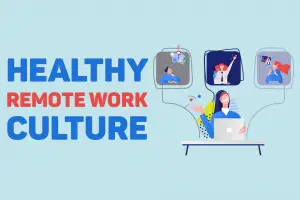When most people think of the term “toxic leader,” they might imagine someone who is verbally abusive, intimidating, and arrogant. While these are certainly toxic behaviors, there are other ways a leader can be harmful to their team.
In this article, we’ll explore the effects of toxic leadership. We’ll also cover 6 common toxic behaviors and by the end of the article, you’ll understand what you need to do to avoid being a toxic leader.
What are the effects of toxic leadership?
Toxic leaders have the potential to negatively affect everyone around them. They don’t care about others’ feelings and ignore rules and logic wherever they can. Either way, these troublesome people create unnecessary complexity in an organization by pushing other person’s buttons every chance they get while enjoying chaos for itself.
The damage that comes from toxic leadership is not just psychological, it has physical effects as well. We can see this through many research studies in the past which show how destructive leaders negatively affect people and organizations.
A study conducted by James E. Green from Georgia Southern University found interesting evidence of patterns that describe toxic leaders. Some of those patterns are egotism, ethical failure, incompetence, and neuroticism.
What are the traits of a toxic leader?
While James’ research focused on 4 patterns, the list of traits that can define toxic leaders is extensive. For this article, I picked up 6 traits of toxic leadership, which will provide you with definitive guidelines for understanding.
Toxic Trait #1 They disrespect employees
Leaders who have little respect for others are more likely to experience employee disengagement, which can be detrimental not only to the individual but also to their company.
I’ve experienced this firsthand during my early days in the retail industry. My manager had noticed that we haven’t completed the inventory of products on time. Instead of trying to figure out what caused the delay, he immediately started using derogatory terms in front of everyone.
I remember feeling awful for a few days and even thought of resigning. I eventually resigned, as the toxicity of the workplace was high and I just couldn’t stand it anymore.
Toxic Trait #2 They show favoritism
Leadership is about building a team of people who will work together to achieve goals. Toxic leaders often have their own biases against those they lead, whether it be positive or negative. These prejudices show up as preferential treatment for employees, leading toward highly toxic working environments.
Think about your own experience. Have you ever witnessed a manager praising people in your team even if the work they did was mediocre? Then, to make things worse, he or she was never satisfied with your own work, even if you always perform exceptionally well. That, my friend, is called favoritism and it’s a path to toxicity.
Toxic Trait #3 They blame others for their own mistakes
The toxic leader never likes to admit mistakes, so he or she will gaslight others to avoid accountability by blaming someone else for the poor decisions made. Gaslighting is a psychological technique that causes people to doubt their own memories and sanity.
They will distort facts and lie in order build themselves up, even if it means disrespecting others or violating policy for their own gain. I always felt like this trait is the easiest path to toxic culture. If you did something wrong, just blame it on others. It’s the opposite of accountability.
Toxic Trait #4 They don’t tell the truth
Leaders must be honest and transparent to build trust with their followers. Toxic leaders avoid telling the truth and struggle when it comes time for them to address important issues facing an organization. This usually comes out of fear that people will find out something negative about the leader. It also might result from fear of being disliked.
When they avoid transparency by distorting facts instead of being open upfront, employee engagement will plummet. This ultimately hurts business success because we need trust for an organization to move forward.
Toxic Trait #5 They assume they are the most important person in the company
Leaders are the most important people in the company, right? Wrong! This is one of the crucial mistakes toxic leaders make, thinking and believing that they are the most important person. This approach singles out people and creates a spotlight effect, which negatively influences teamwork and performance.
It’s drawn from fear and ego. That diminishes the importance of recognition and other people’s successes, and the organization ultimately loses great people. It also pushes those who stay even further down to where they feel left out and underappreciated.
Toxic Trait #6 They avoid listening to their people
Leaders know things better than anyone else in the company, don’t they? Not really. The concept of never-ending learning in leadership is an unknown idea for toxic leaders. They know everything and therefore don’t need to improve. When employees try to give constructive feedback, it either falls on deaf ears or is completely dismissed.
This produces anxiety among people in the organization, as they know their ideas and suggestions won’t be heard. It reduces morale and builds an unhealthy competition among team members.
How to avoid toxic behavior in leadership?
Phew! Wow! I got exhausted of talking about all this toxicity. Are people ever going to change? The good news, YES! While I shared a few traits of highly toxic leadership, there are ways to overcome and eventually avoid toxic behavior in leadership.
Improvement #1 Encourage open communication
You can always change. There are many ways to improve the working environment for people. One way is by talking directly with your employees. Ask them about any behaviors that might discourage them, then discuss methods of improvement you could use to make their experience better at work.
Encourage them to speak up and share their ideas by keeping an open communication. Successful communication is a two-way street and can bring organizations to new heights.

7 Principles of Effective Leadership Communication Strategies
Effective leadership communication is a crucial aspect of personal development. Leaders can achieve personal and professional success through purposeful leadership communication. In this article, I
Improvement #2 Own up to your mistakes
You made a mistake. Everyone does. When that happens, own it, admit it, and apologize to those who are affected. You’ll be surprised by the reaction of your people. True leaders are human-centered and focus on helping people understand that it’s okay to fail.
Failure is a learning experience on the path to success. This kind of positive behavior will promote collaboration as people will seek to learn from others to prevent those mistakes in the future.
Improvement #3 Get your team on board
Effective decision-making is a vital component of leadership. That doesn’t mean you should decide on your own. Bring your people in on the company’s plans and ask their opinion about it. You can take a democratic approach to making decisions. While that may not be always ideal, it’ll build a sense of purpose.
This will further enhance the team spirit and instill a sense of belonging among your people.
Improvement #4 Take it easy with your people
Your team is not a perfect machine. It’s only natural that people will make mistakes, but you should always treat your employees with compassion and understanding. You will experience situations where your team might be overwhelmed with work. The deadlines might stress them out.
When that happens, the best thing you can do is to give them some breathing space. Talk with them about what they’re facing and how you can help them overcome challenges. You’ll discover more meaningful facts about your people and build a healthier work relationship.
Improvement #5 Provide a sense of security
Creating a healthy work environment requires a sense of security. While you encourage people to talk to you and each other, it’s crucial to do so in a safe and friendly environment. Reassure your people that it is safe to make mistakes, to talk openly about issues, and that you will not use their challenges against them.
Providing a sense of security also builds trust among people and the entire organization.

How to nurture a strong remote workplace culture
Hybrid and remote work have been the norm for businesses since long before recent pandemic sped up this trend. While some people may say they
Improvement #6 Take Action
While everything I mentioned so far is exceptional and can be communicated easily, there’s one last piece of the puzzle missing. That is TAKING ACTION. Once you address all those issues about toxicity in the workplace leadership, it’s essential that you act on your words.
That means you got to roll up your sleeves and get going. Stand behind everything that you say and work towards solutions. Those will promote healthy workplace practices and your people will be more willing to follow you.
How can a leader avoid being toxic?
Toxic leadership can be a major problem in any organization. It can cause employees to feel demotivated and disengaged, leading to decreased productivity and even high staff turnover rates.
However, there are ways to overcome and eventually avoid toxic behavior in leadership. Encourage open communication, own up to your mistakes, get your team on board, take it easy with your people, provide a sense of security, and take action.
Ultimately, practice self-reflection daily. It’s an effective way to grow as a person and if you want to know more, check out the article below. In it, you’ll learn why reflection is so important to the process of leadership development and how to do it right.

How Self-Reflection Can Help Leaders Grow
Self-reflection can help you grow and change by examining your personal experiences. To increase your self-awareness, improve your learning, and grow as a leader, you






